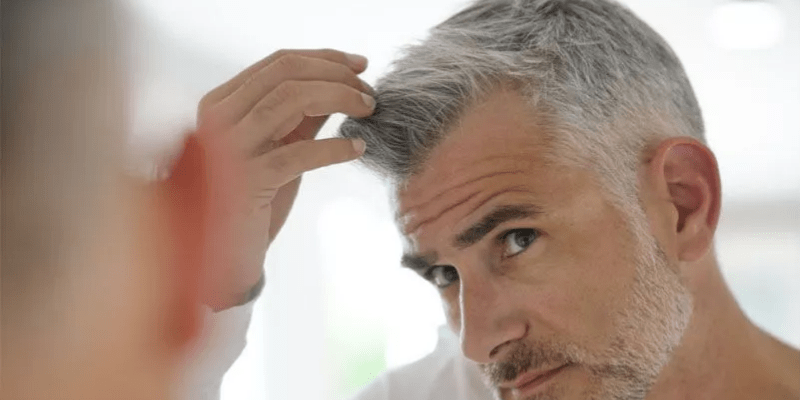How Long After Hair Transplant Will Hair Fall Out?
How long after hair transplant will hair fall out? We’ll try to find an answer to your question. Shock shedding after a hair transplant is something that people who have had the procedure do not want at all. After hair transplantation, people want to look like they have hair right away. But most people who have a hair transplant experience something called “shock loss” after the procedure. So, what exactly is shock leak? Why do people lose their hair after a hair transplant? When does it start? When does it end? In our article, we will look at them in depth.
As everyone knows, the FUE method involves taking one hair follicle at a time from the donor area and putting it on the bald spot. Even a small mistake when taking hair follicles out and putting them somewhere else is a trauma. The hair root is cut off from the blood vessels it needs to grow. In classical terms, this means that the roots are “shocked,” because they can’t adapt to their new environment. The part that gives the hair follicle life is the bottom third. The hair follicle wants to protect itself because it has been hurt.
How Long After Hair Transplant Will Transplanted Hair Fall Out?
In the new spot, the living root stays under the skin, while the top part breaks off and falls off. In a way, it’s like they go to sleep. After a hair transplant, this is called shock loss. This condition is called telogen effluvium in the medical world. This kind of spill is a physical reaction that the body makes in response to trauma.
Also, people with normal hair loss may lose weak, thin hair that is about to die because of genetic loss. This can happen during a transplant. After hair transplantation, hair loss can be seen in two ways. These:
- Putting on weight in the donor area
- Shedding in the area where it was moved
- Spill in the area for donors
Spilling in the donor area is something that shouldn’t happen. Especially if more hair follicles are taken from the area above the ear, hair loss may happen in the follicles that were not taken out. If too many roots are taken, the tree will look bad. This is called “permanent shedding.” This can also happen if the purchase is made with a very big punch. Loss of hair is the name for this. With the FUE method, there is some hair loss in the donor area, but not as much as with the FUT method.
Shock Loss
No one who gets a hair transplant wants their hair to fall out or be damaged afterward. Or, they want to get through with as little mess as possible. There are some things that can make shock loss less or more. These things have not been proven by science. But it was decided based on the statistics from the cultivation that had been done so far. Let’s quickly sum them up. But let’s not forget that we can’t stop all shock situations from happening. Stage of Hair Growth After Hair Transplant
When a transplant is done on a very young person, the rate of shock shedding is higher. Since androgenic pressure will go down as you age, you will lose less hair. At a young age, the first option should be drug treatment.
When transplants are done more often than is necessary, they cause more damage to the blood vessels. Since the hair follicles won’t get as much food, the rate of hair loss will go up after a very dense transplant.
What Affects Transplanted Hair Fall Out?
This is very important, especially if tightening is done between hairs that aren’t very thick. The holes should be in the same direction as the hair. If not, this hair may fall out more often because it will be damaged.
When ends are very wide, they always cause more damage. The more stress on the veins that feed the hair, the more hair will fall out.
How Much Adrenalin Was Used?
Adrenaline is often used in the channel method to stop bleeding. Also, some drugs used to numb a small area of the body contain adrenaline. Unintentional use of adrenaline raises the risk of necrosis and makes it more likely that hair will fall out after a hair transplant. Since adrenaline isn’t needed in the pen method, less hair is shocked. To reduce shock loss, you shouldn’t use a lot of local anesthesia. So, the shock that will happen will be worsened by the Tumescan anesthesia. Day 6 Of Hair Transplant
Taking a lot of grafts in one session will definitely cause you to lose more hair after a hair transplant. Megaseans means that capillaries are hurt more, so adrenaline is used more. Also, waiting longer for the hair follicles to grow out will lead to more hair loss after a hair transplant. An average of 2000 grafts should be done in one session. If more grafts are needed, the surgery should be done over a few days.
Does Anyone Who Gets A Hair Transplant Lose Their Hair All At Once?
Most people lose a lot of hair after getting a hair transplant. Some people who have had hair transplants lose their hair all at once, which is called “shock shedding.” This happens to about 10% of people who have had hair transplants, but it can happen to 90% of people. Even though each person’s shock spill is different in how bad it is, few people have never had one. This temporary hair loss isn’t a sign that the hair transplant won’t work. On the contrary, it’s a sign that new, healthy hair is coming in. Not only does the shock loss process happen during hair transplants. In short, the Shock Spill process happens after any kind of transplantation, including beard, mustache, and eyebrow transplantation. The Day 6 Of Hair Transplant
Even though it is thought that taking care of some things carefully during a hair transplant reduces shock loss, there are no exact data or results to back this up. Some things, like not leaving the collected hair follicles outside for a long time, keeping the roots in nutrient-rich liquids instead of directly outside, and holding the roots from the top instead of the bottom, are thought to reduce the shock loss.
How Important is Hair Transplantation After Care for Long-Term Results?
The hair transplantation is a standard and increasingly popular procedure that many men and women opt for to restore their natural hair. The procedure involves transferring healthy hair follicles from the back or sides of the scalp to balding areas. Although it is a relatively safe and straightforward procedure, take proper care of your hair after the surgery to ensure optimal results. The success of a hair transplant depends mainly on how well you take care of your scalp and newly transplanted hair follicles during the healing process. With proper hair transplantation after care, your hair may become smooth, firm, and even fall out. Here are some tips to help you maximize your hair transplant results and maintain your new look.

One of the most important steps in ensuring long-term success with a hair transplant is following your hair transplant surgeon ’s instructions for hair transplantation after care. Your doctor will likely provide you with detailed instructions for taking care of your scalp, including when and how often to wash it, as well as what products you should use. In addition, they may provide you with medications to reduce inflammation and help facilitate healing.



